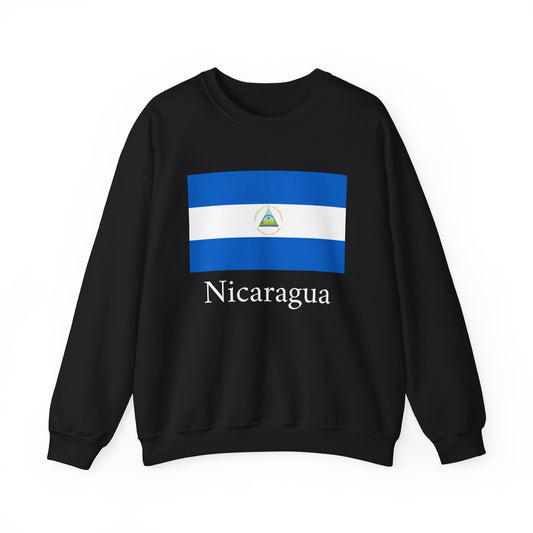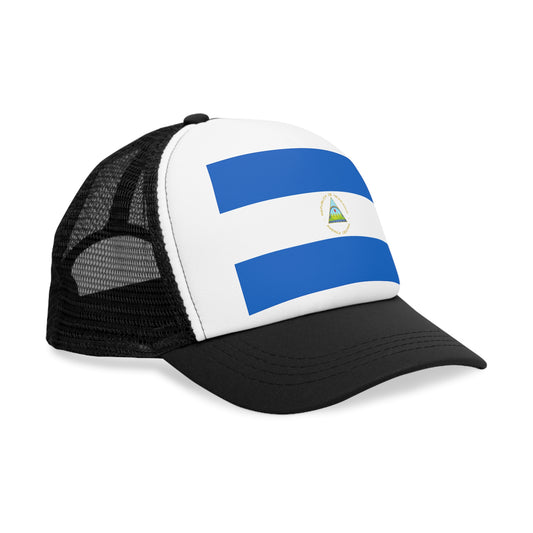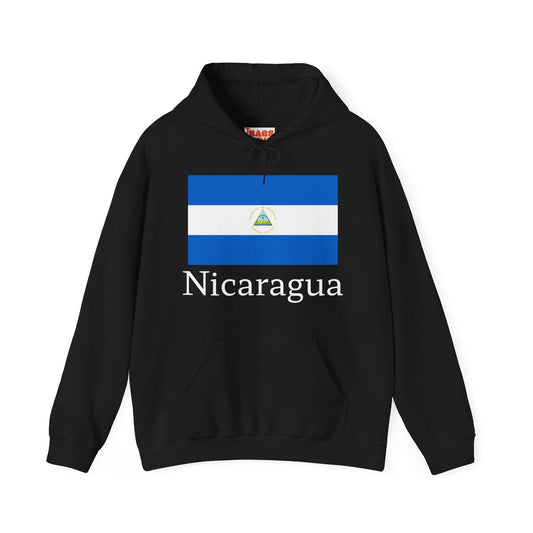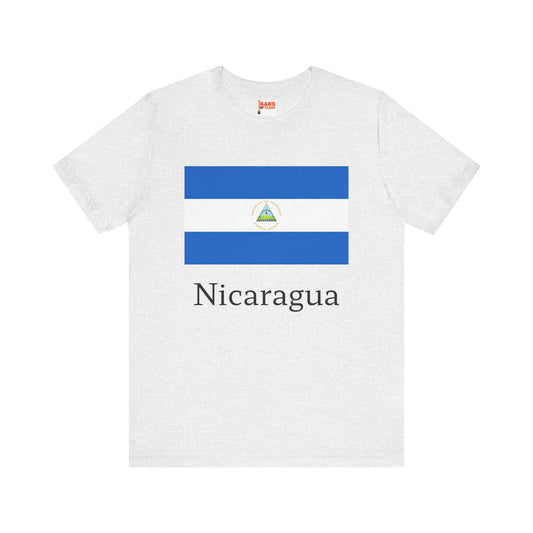-
Nicaragua Sweatshirt
Regular price $34.15 USDRegular priceUnit price / per -
Nicaragua Flag Sweatshirt
Regular price $34.15 USDRegular priceUnit price / per -
Nicaragua Pillow
Regular price $22.65 USDRegular priceUnit price / per -
Nicaragua Backpack
Regular price $59.79 USDRegular priceUnit price / per -
Nicaragua Leather Patch Hat
Regular price $18.85 USDRegular priceUnit price / per -
Nicaragua Mug
Regular price $11.65 USDRegular priceUnit price / per -
Nicaragua Trucker Cap
Regular price $14.90 USDRegular priceUnit price / per -
Nicaragua Hoodies
Regular price $34.40 USDRegular priceUnit price / per -
Nicaragua T-shirts
Regular price $22.79 USDRegular priceUnit price / per -
Nicaragua Flag Hoodies
Regular price $34.40 USDRegular priceUnit price / per -
Nicaragua Flag on T-shirt
Regular price $22.79 USDRegular priceUnit price / per
Collection: Nicaragua
The Nicaragua flag symbolizes pride and national identity for the people of Nicaragua. With its vibrant colors and unique design, the flag has a rich history and significance that dates back to its adoption. We will delve into the controversies, symbolism, and current relevance of the Nicaragua flag, uncovering fascinating facts.

Overview of the Nicaragua Flag's Design and Colors
The flag of Nicaragua showcases a visually striking and meaningful design characterized by two azure blue stripes that border a central white stripe horizontally. Each blue stripe embodies the significant bodies of water that flank Nicaragua – the Pacific Ocean to the west and the Caribbean Sea to the east. Nestled within the white middle stripe is the country's symbolic coat of arms, adding a layer of profound symbolism to the overall aesthetic. The white stripe serves more than just a separator of the blue; it represents peace, acting as a backdrop to the national coat of arms, which further enriches the flag with its intricate symbolism. This harmonious combination of colors and emblems beautifies the flag and encapsulates the Nicaraguan nation's ideals and aspirations.
Historical Context: The Evolution of the Nicaragua Flag
The journey of the Nicaragua flag through history is marked by its adoption and subsequent modifications, each echoing the nation's evolving identity and political landscape. Initially introduced in 1823 after Nicaragua's independence from Spanish rule, the flag has witnessed several redesigns. This initial version resembled the flag of the United Provinces of Central America, highlighting the collective aspirations for a unified Central American state.
Over the years, the flag has undergone various changes, with multiple governments and political factions tweaking its design to align with their visions for Nicaragua. Despite these alterations, the essence of the original design—a symbol of unity and independence—has remained a constant feature. It wasn't until August 27, 1971, that the flag found its current form. This design honors the country's geographical beauty and the quest for peace and pays homage to its historical roots and the enduring hope for a united Central America.
This evolution reflects a broader narrative of Nicaragua's history, marked by periods of upheaval, reform, and aspirations for a brighter future. As such, the flag stands not just as a national emblem but as a living document of Nicaragua's journey through time, bearing witness to the country's resilience and enduring spirit of unity.
Symbolism: Decoding the Colors and Emblem

The symbolism woven into the fabric of the Nicaragua flag is rich and multifaceted, telling a story of the nation's values and aspirations. The two outer blue stripes, vivid against the canvas of the flag, signify not just the Pacific Ocean and the Caribbean Sea that hug the country's shores but also stand for loyalty and justice, principles deeply rooted in the Nicaraguan ethos. The central white stripe, a stark contrast to the blue, embodies the nation's pursuit of peace and purity, reflecting a universal desire for harmony and a clean slate.
At the heart of the flag lies the national coat of arms, a symbol dense with meaning. Enclosed within a triangle, representing equality and the three branches of government, are five volcanoes, signifying the unity and cooperation among the five nations of Central America, a nod to Nicaragua's history and its ties to its neighbors. Above the volcanoes, a rainbow stretches, a hopeful symbol of peace arching over the land, with a cap of liberty symbolizing sovereignty and freedom. These elements encapsulate Nicaragua's history, its struggles for peace, unity, and independence, and its enduring hope for a harmonious future.
Current Relevance: The Nicaragua Flag in Today's Context
Today, the flag of Nicaragua remains a vibrant symbol of national identity, prominently featured in a range of settings from governmental buildings to educational institutions, symbolizing the nation's sovereignty and unity. Its presence at national events and military ceremonies underscores its role as a vital emblem of statehood and pride. However, the flag has also been central to political discourse, as various groups have appropriated it during demonstrations and protests.
These actions reflect the flag's dynamic nature as a symbol capable of uniting citizens under typical nationalistic fervor and as a powerful tool for expressing political dissent. This multifaceted usage demonstrates the flag's continuing relevance in Nicaraguan society, embodying the complex interplay between patriotic celebration and the right to challenge governmental authority. Its role in contemporary debates and protests highlights the ongoing importance of the flag as more than just a national emblem, but as a living symbol of the people's aspirations, struggles, and hopes for their country's future.
Additional Facts: Protocols and Anecdotes Related to the Nicaragua Flag
In observing the reverence with which the Nicaragua flag is treated, certain etiquette emerges, underscoring its significance. Among these protocols, the most stringent dictate that the flag must be displayed in a manner that prevents it from ever making contact with the ground, symbolizing respect and honor for the nation it represents. Additionally, the Nicaraguan flag is to be flown higher than any other flag, affirming its paramount importance in the hierarchy of symbols within the country.
The celebration of Flag Day on September 14 serves as a testament to the flag's revered status, marked by a series of patriotic events. Schools, government offices, and communities come together in a spirited display of national pride, featuring parades, speeches, and cultural performances, all dedicated to honoring the flag and what it stands for.
An anecdote of historical significance involves the flag's design, which was the result of a national competition. Francisco Lopez, the winning designer, thus played a pivotal role in shaping a key element of Nicaragua's national identity. His contribution ensured that the flag not only embodied the nation's values and aspirations but also resonated with its people, making it a source of pride and unity. This blending of historical creativity with national sentiment imbues the flag with a deeper meaning, cementing its role in the heart of Nicaraguan culture.






















